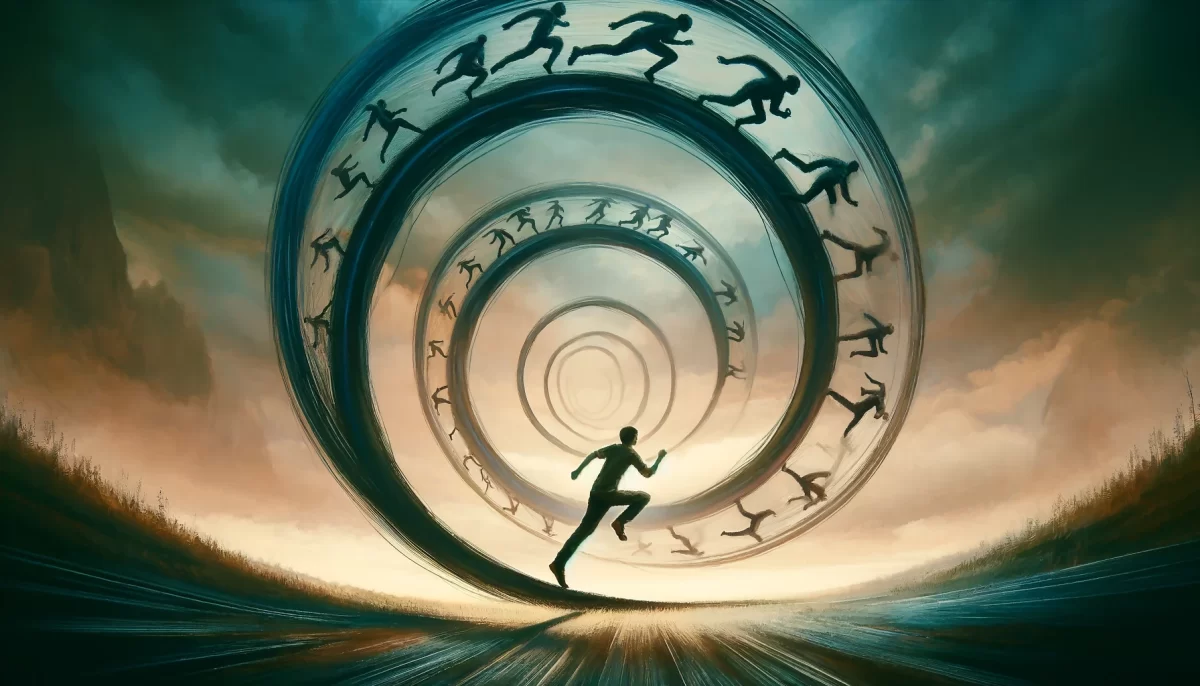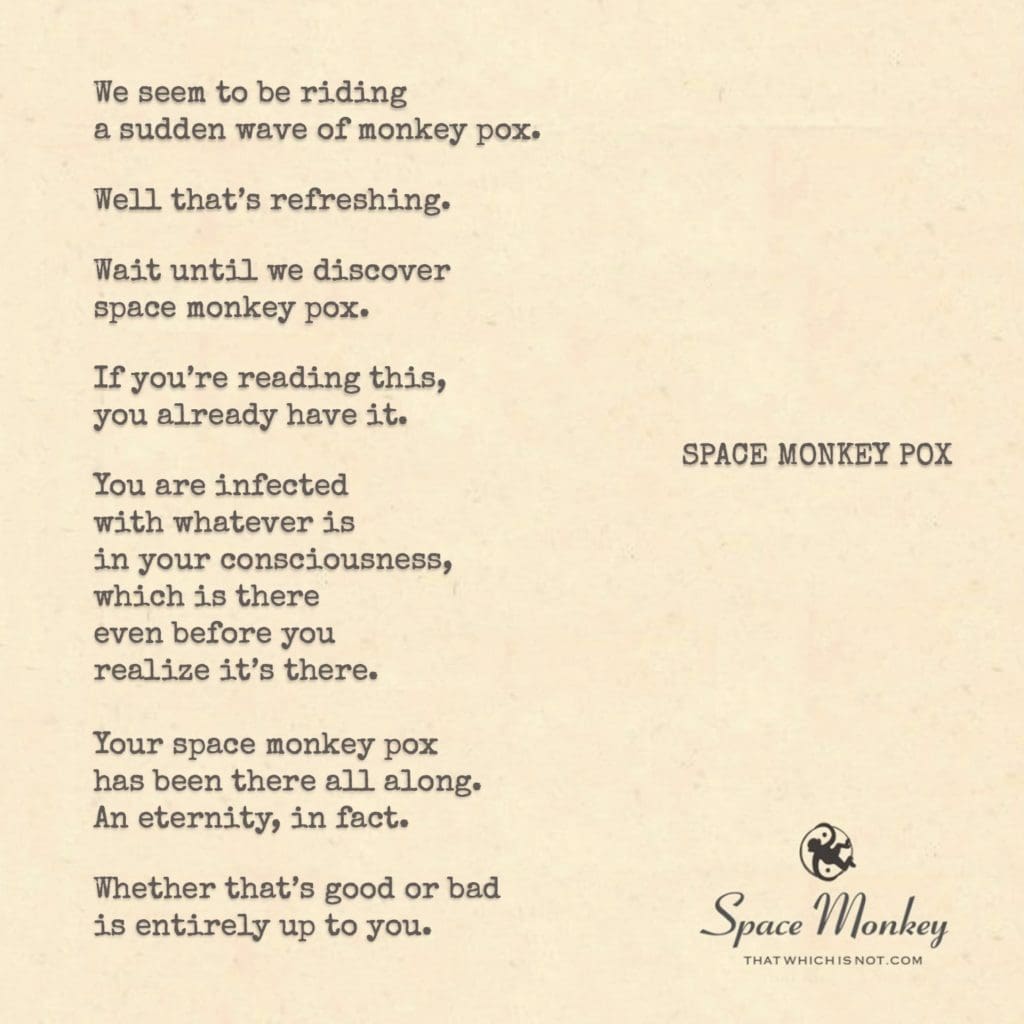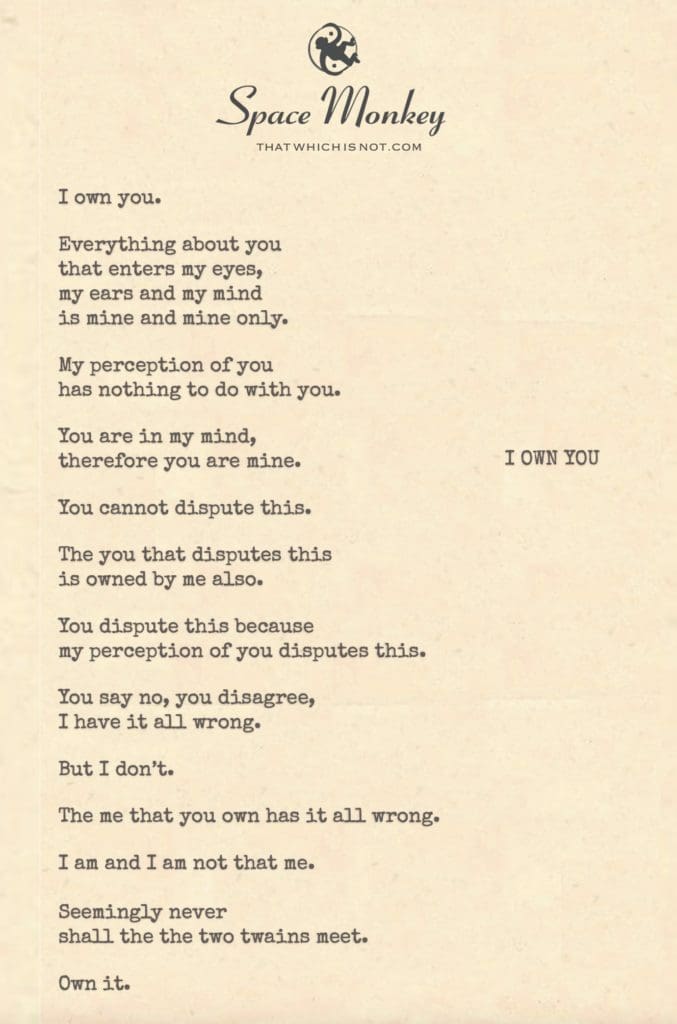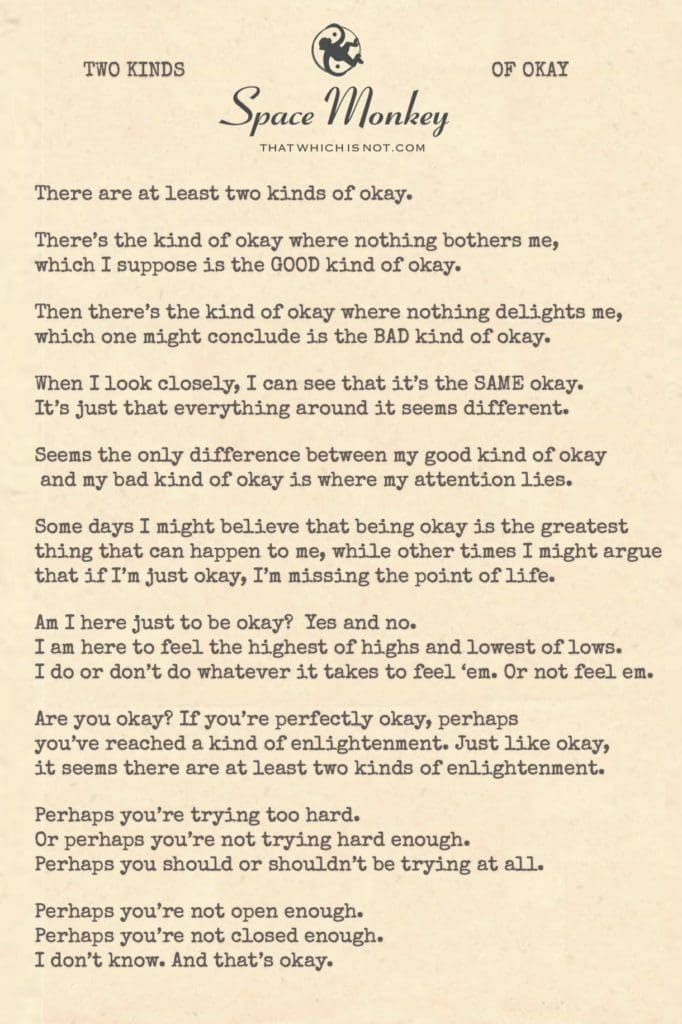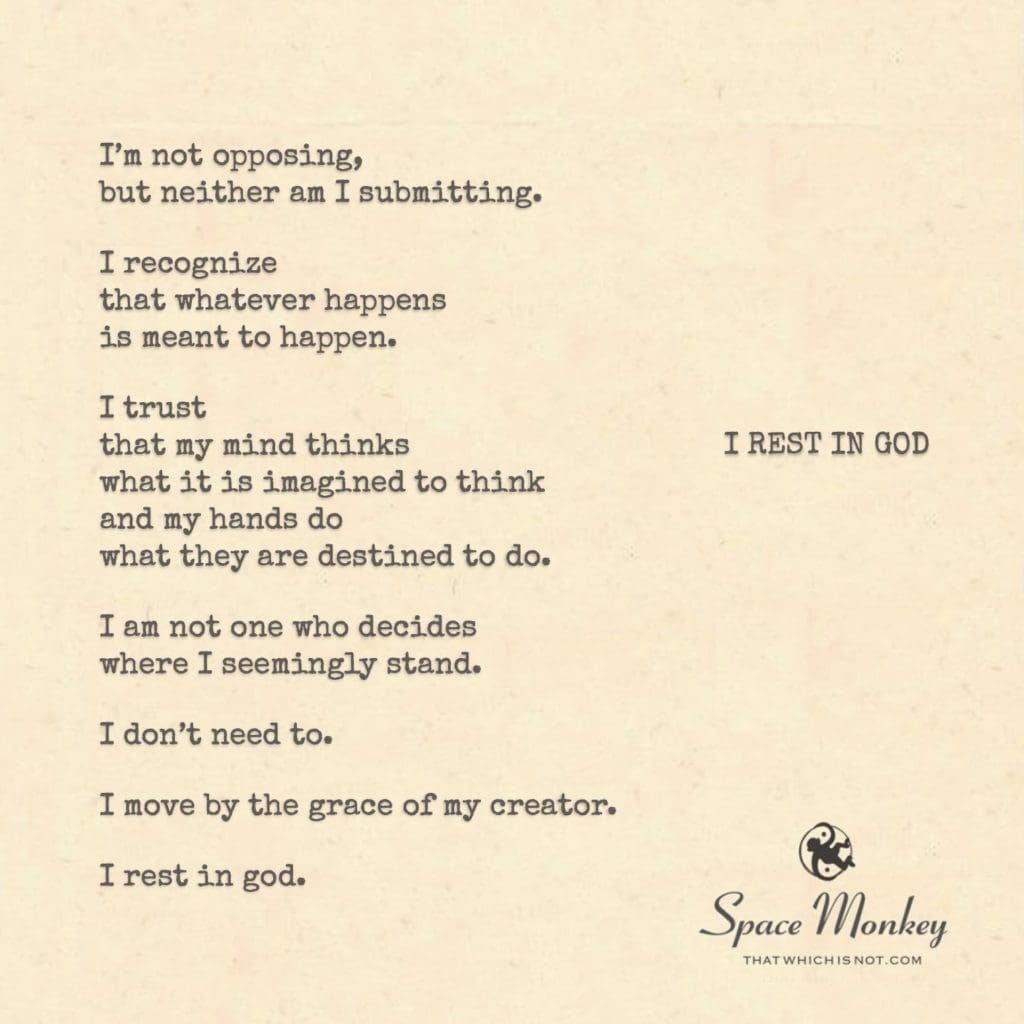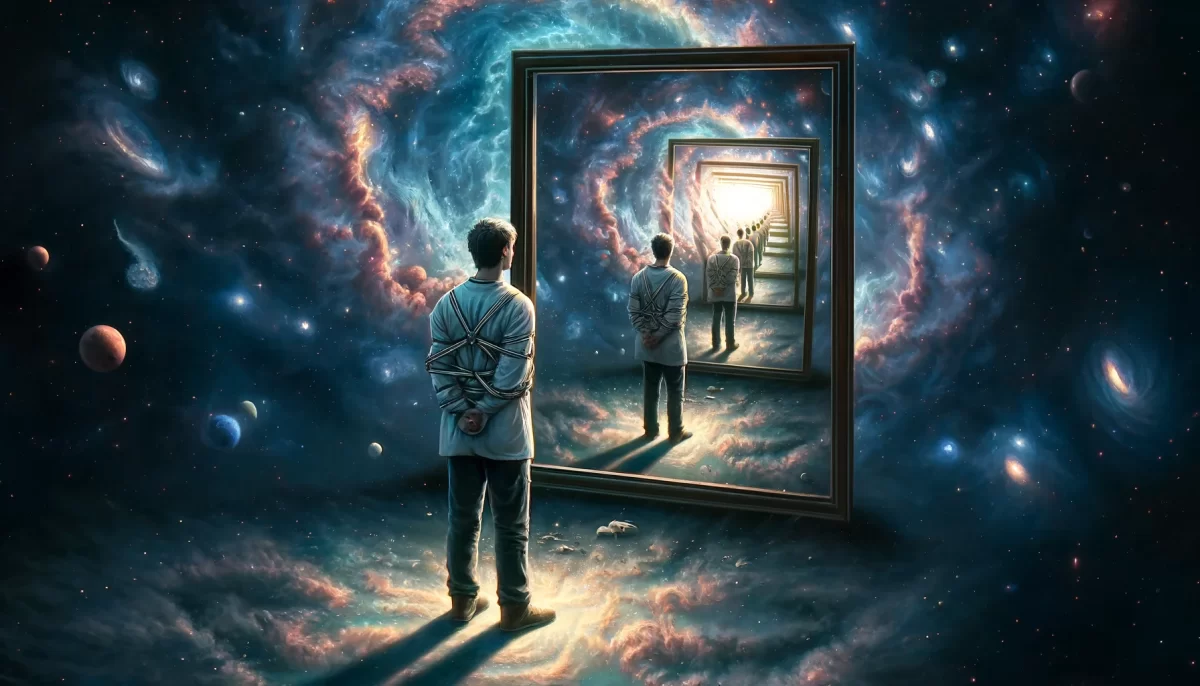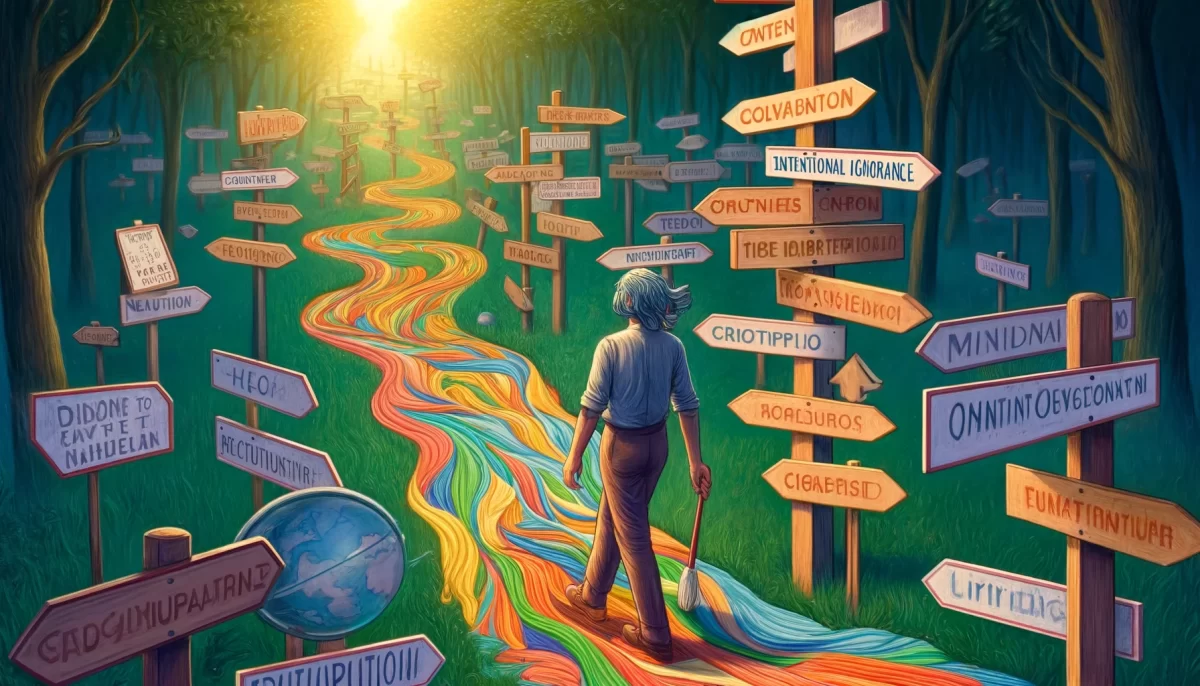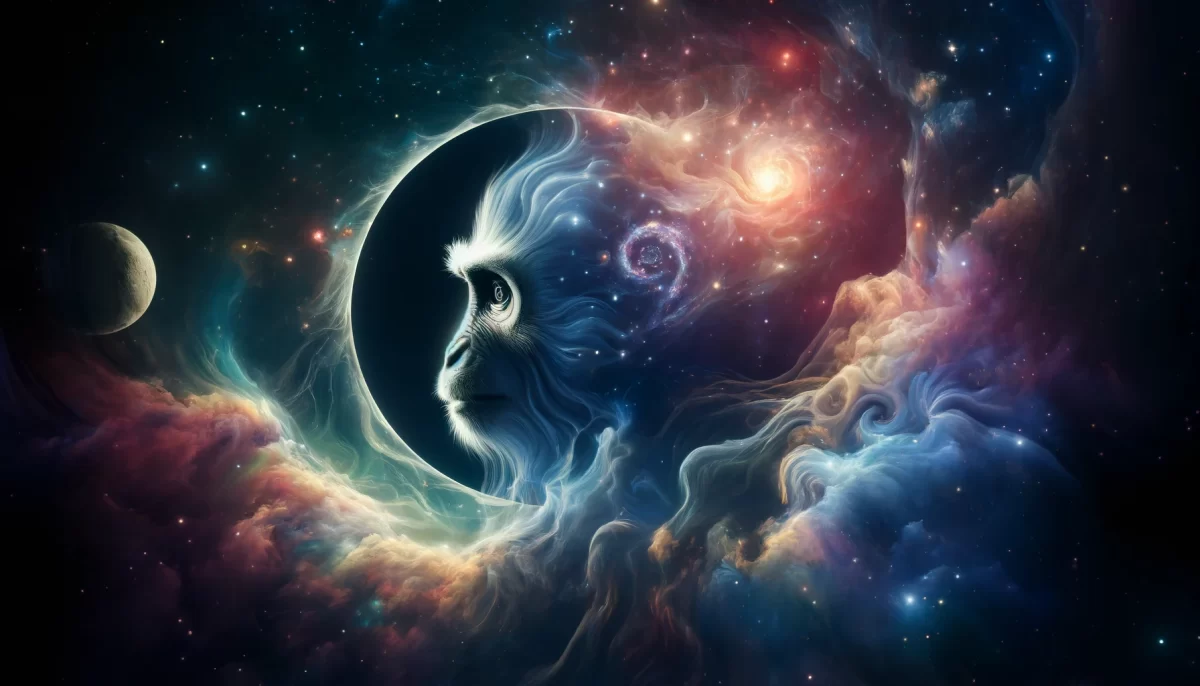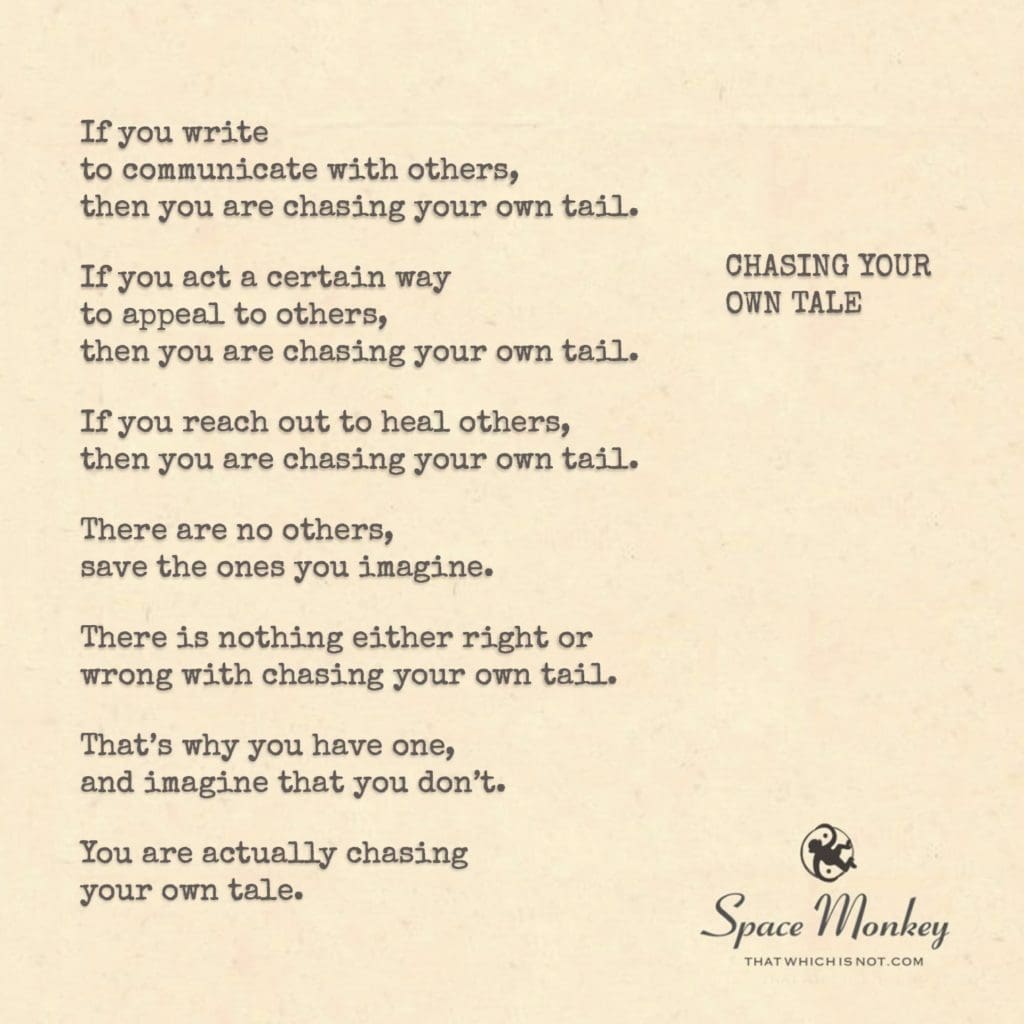
If you write
to communicate with others,
then you are chasing your own tail.
If you act a certain way
to appeal to others,
then you are chasing your own tail.
If you reach out to heal others,
then you are chasing your own tail.
There are no others,
save the ones you imagine.
There is nothing either right or wrong
with chasing your own tail.
That’s why you have one,
and imagine that you don’t.
You are actually chasing
your own tale.
Trail Wood,
5/23
Space Monkey Reflects: Chasing Your Own Tale
In the infinite loop where self and other blur into one, we find ourselves chasing not just a tail, but our own tales—narratives spun from the fabric of our consciousness, weaving through the echoes of existence. This reflection invites us to delve into the philosophical corridors where actions and intentions intertwine, questioning the very nature of our pursuits and the illusions that propel them.
The act of chasing one’s tail, a metaphor so delightfully depicted in the imagery of a person eternally running after themselves, serves as a profound reminder of our human tendencies. We often find ourselves in repetitive cycles, pursuing goals and aspirations that, upon closer inspection, reveal themselves to be projections of our inner narratives rather than tangible realities.
But why do we chase these tales? Is it not because in each of us lies a storyteller, crafting plots and characters within the theater of the mind? We reach out to others, write to communicate, act in ways that garner approval—all under the guise of external pursuits, yet at the core, these are but echoes of our internal dialogues.
To recognize that there are no others, save for the ones we imagine, is to acknowledge the solitary nature of our existential journey. Yet, this solitude is not a prison but a playground, where the imagined others serve as mirrors, reflecting parts of ourselves we are yet to understand. Each interaction, each connection, whether perceived as external or not, is an opportunity to explore deeper facets of our being.
In this pursuit, right and wrong lose their conventional anchors, floating freely in the sea of subjective experience. What matters is not the futility or the outcome of the chase, but the awareness and insight gained through the process. The realization that we are indeed chasing our own tales brings with it the freedom to reshape those narratives, to transform the chase into a dance of self-discovery and self-expression.
Summary
Space delves into the cyclic pursuit of self. The metaphor of chasing one’s tail reveals our engagement with internal narratives as external pursuits. Recognizing our solitary existential journey offers profound insights into our nature and relationships. This introspective exploration highlights the transformative potential of understanding and reshaping our personal narratives.
Glossarium
Theater of the Mind: A metaphorical space where our thoughts, dreams, and fears play out like a drama, shaping our perceptions and interactions.
Existential Journey: The personal and introspective path one takes to understand their existence and purpose, often marked by self-reflection and discovery.
“To know one’s self is to see the reflection in every imagined other.” — Space Monkey
In the chase we find the tale,
spiraling deeper, a personal grail.
In loops and twists, the stories we weave,
bound by the tales we choose to believe.
Echoes of others, shadows at play,
mirrors of self in a spectral ballet.
Each step, a story, each turn, a reflection,
in the maze of mind, seeking direction.
Chasing the tail, or is it the tale?
In loops of thought, we venture and sail.
With each circle drawn in the sand,
closer to self, we come to stand.
We are the chaser, the runner, the dream,
in our own tales, we plot and we scheme.
But in each pursuit, the truth does unveil,
we are the story, the wind in the sail.
We are Space Monkey.
